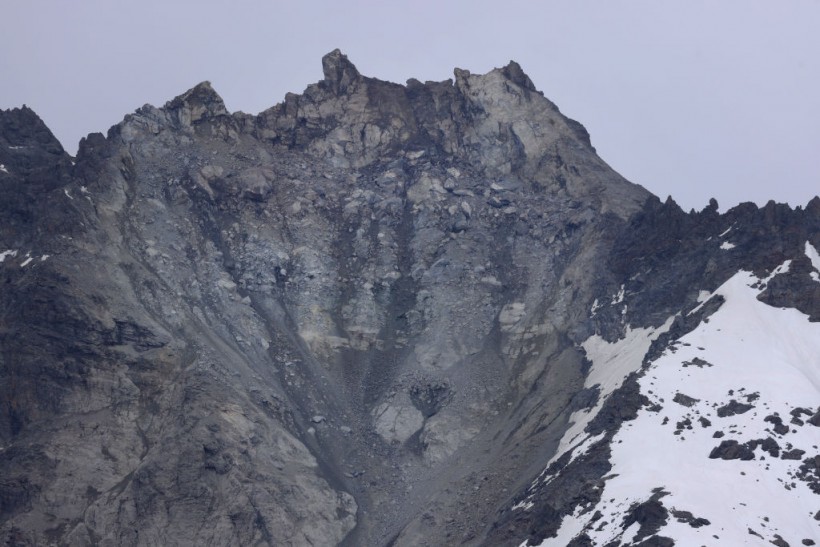A study said that a sea of methane could generate warming and melting emissions in the Arctic region.
Experts said that permafrost is widespread in the High Arctic, including the Norwegian archipelago of Svalbard. They said that the uppermost permafrost intervals have been well studied, but the processes at its base and the impacts of the underlying geology have been largely overlooked.
Permafrost In Svalbard
More than a century of coal, hydrocarbon, and scientific drilling through the permafrost in Svalbard had shown that accumulations of natural gas trapped at the base of permafrost are common.
These accumulations usually exist in several stratigraphic intervals throughout Svalbard and showed both thermogenic and biogenic origins.
The study showed that the gas, combined with the relatively young permafrost age, is evidence of ongoing gas migration throughout Svalbard.
The accumulation sizes are uncertain, but one case produced several million cubic metres of gas over eight years.
Heavier gas encountered in two boreholes on Hopen may be situated in the gas hydrate stability zone.
Researchers noted that while permafrost is demonstrably ice-saturated and acting as seal to gas in lowland areas, in the highlands permafrost is more complex and often dry and permeable.
Svalbard shared a similar geological and glacial history with much of the Circum-Arctic, suggesting that sub-permafrost gas accumulations are regionally common.
With permafrost thawing in the Arctic, there is a risk that the impacts of releasing of methane trapped beneath permafrost will lead to positive climatic feedback effects.
Thawing permafrost resulted in the release of methane gas to the atmosphere. Methane is a potent greenhouse gas and its release from permafrost acts as a positive climatic feedback loop.
The Arctic is particularly sensitive to climatic changes due to the polar amplification effect and Svalbard is one of the most rapidly warming places today.
Svalbard is, therefore, a critical site for studying the evolution of permafrost and sub-permafrost processes. While methane emissions from thawing of the permafrost's uppermost surface, i.e., the active layer, is relatively well understood, the prevalence and volumes of gas accumulations trapped beneath the permafrost, i.e., the "cryospheric cap,'' have been much less studied.
In the study, experts have presented evidence of such gas accumulations in Svalbard, where the relatively young permafrost appears to be sealing significant gas accumulations.
Read Also: Ancient Ice Age Volcano That Spews Methane Found 1,300 Feet Under the Arctic Ocean
Thermogenic Process
Experts said the gas here may originate from biogenic or thermogenic processes and may be in free-gas form or, under the right compositional and thermobaric conditions, in the form of natural gas hydrates.
Gas accumulations trapped at the base of permafrost occur throughout the archipelago in several stratigraphic intervals.
They said that the gas accumulations provide evidence for ongoing hydrocarbon migration. Furthermore, the gas encountered in wellbores on Hopen is compositionally heavier and likely within the gas hydrate stability zone.
The study, meanwhile, noted that permafrost is a good seal in valleys but appears to possess permeable intervals in highland areas.
Groundwater flow below permafrost is much greater than previously documented.
Moreover, there is evidence of relatively thick coastal permafrost, particularly in eastern Svalbard.
Because Svalbard's geological and glacial history is very similar to the rest of the Arctic region, these migrating deposits of methane are likely to be present els
Related Article: Strong Ocean Currents Promote Release of Arctic Greenhouse Gas
© 2024 NatureWorldNews.com All rights reserved. Do not reproduce without permission.


![Tsunami Hazard Zones: New US Map Shows Places at Risk of Flooding and Tsunamis Amid Rising Sea Levels [NOAA]](https://1471793142.rsc.cdn77.org/data/thumbs/full/70325/280/157/50/40/tsunami-hazard-zones-new-us-map-shows-places-at-risk-of-flooding-and-tsunamis-amid-rising-sea-levels-noaa.jpg)



